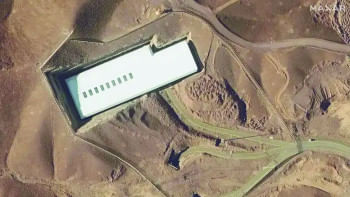Of crawling growth and an underfed economy?
Of late, the Finance Minister formally admitted that the growth targets over the past years were unattainable. In fact, by this year the growth rate was supposed to be 8 percent as per the Sixth Five-Year Plan. However, the highest growth rate of 6.7 percent was achieved three years back. At the outset of the outgoing fiscal year, the growth rate was set over 7 percent, which was downsized to 6.51 percent mainly due to unprecedented political violence in the third quarter of the outgoing fiscal year. We lagged behind all through in terms of achieving growth targets since the outset of the Sixth Five-Year Plan. Growth has progressed at a rather 'crawling' rate!
Where should the desired growth come from unless there is significant boost in private investment? Private investment is estimated to be 22.07 percent of GDP in the outgoing fiscal year. It has been quite stagnant for the last five years; investment growth is led mainly by the one from the public sector. Nevertheless, the positive difference between savings and investment was a big headache among policymakers and experts for quite some time. While data reveal that all savings have been invested this year, there is hardly any scope for complacency. National savings - GDP ratio of 29.01in 2014-15 - is the lowest since 2011-12, which implies that the national propensity to save has been diminishing gradually. It is truly a matter of grave concern because by this year, total investment was projected to be much higher than the current 28.97 percent. We have perhaps ended up with a low level equilibrium trap of savings and investment.
Is there any financing devise for achieving higher growth in the budget? The proposed budget grew at 18 percent compared to that of the outgoing fiscal year, which is more of a traditional growth. In relation to the revised budget, the growth is a bit higher, about 24 percent. Achieving higher growth critically hinges on the size of the Annual Development Programme (ADP) and its rate of implementation. This year the rate of ADP implementation is estimated to be 93 percent. Since the third quarter was the period of political ravage, the quality of implementation is expected to be compromised to a large extent. The last quarter is witnessing about 61 percent implementation as it was 43 percent in the first three quarters. The size of the proposed ADP is Tk. 97,000 crore, which is 29 percent higher than the revised ADP of the outgoing fiscal year. Since 35 percent growth in ADP in the outgoing fiscal year contributed to only 6.51 percent growth, there is a question whether a 29 percent growth would really contribute to 7 percent 'moderate dream' growth that the Finance Minister envisioned quite confidently.
This year the budget is tremendously stressed with revenue deficit. It resulted in a significant compulsion of reducing the outgoing budget by 4.3 percent in the revised budget. Failure in achieving revenue target by Tk. 19,583 has compelled the Finance Minister in taking resort to the banking and non-banking sectors. The revised target of depending on domestic borrowing increased from Tk. 43,277 to 54,714 crore without increasing the level of targeted borrowing from the banking sector. The additional money would be borrowed from non-banking sector like selling savings certificates. In addition, the budget deficit has reached an unprecedented level, as high as 32 percent of the revised budget of the current fiscal year, while it was proposed at 27 percent. In the last fiscal year the deficit was 25 percent. The proposed budget has a targeted deficit of a little higher than 29 percent. The targeted borrowing from banking sector has increased from Tk. 31,714 to 38,523, which would be increased significantly as the target of foreign aid is unlikely to be achieved. Thus, such a gigantic targeted deficit of Tk. 86,657 in the budget 2015-16 has given rise to a big question as to the capacity to finance the ADP through our own revenue generated over the next fiscal year. In fact, about 89 percent of the ADP based on domestic borrowing and foreign aid would create a formidable burden on the future generation since they will have to repay the loan. Still, the economy will run significantly underfed in terms of the size of the ADP, and starvation is likely to turn the envisioned growth into a mirage.
Will the proposed structure of the ADP help address the 'twin deficiency' viz. infrastructure and energy which is posing the most formidable challenge to attain higher growth? Most of the increment of the ADP is dedicated to increasing power generation and additional cost of making Padma Bridge 'a reality'. The proposed ADP of the Power Division in FY2015-16 has doubled from the revised ADP of Tk. 8,276 crore, and the ADP of the Bridges Division grew significantly from Tk. 5,299 to 8,921 crore. The ADP on this critical area has increased only by 29 percent. Thus, an absence of significant growth of the ADP in roads and highways is unlikely to address the acute deficiency of infrastructure, which is mostly located to road transportation. It is also going to hinder the movement of vehicles through increased congestion and traffic on the roads.
The proposed budget is unlikely to address the major hurdles that have been hindering the envisioned growth spelt in the Sixth Five-Year Plan. There is neither any new plan to simulate private investment through addressing infrastructural, energy and institutional deficiencies, nor any exposure of the Seventh Five-Year Plan which makes a difference in the proposed budget. Perhaps a supplementary initiative is required to raise the appetite for growth in line with 'Vision 2021'.
The writer is Senior Research Fellow at Bangladesh Institute of International and Strategic Studies (BIISS). E-mail: [email protected].

 For all latest news, follow The Daily Star's Google News channel.
For all latest news, follow The Daily Star's Google News channel. 



Comments